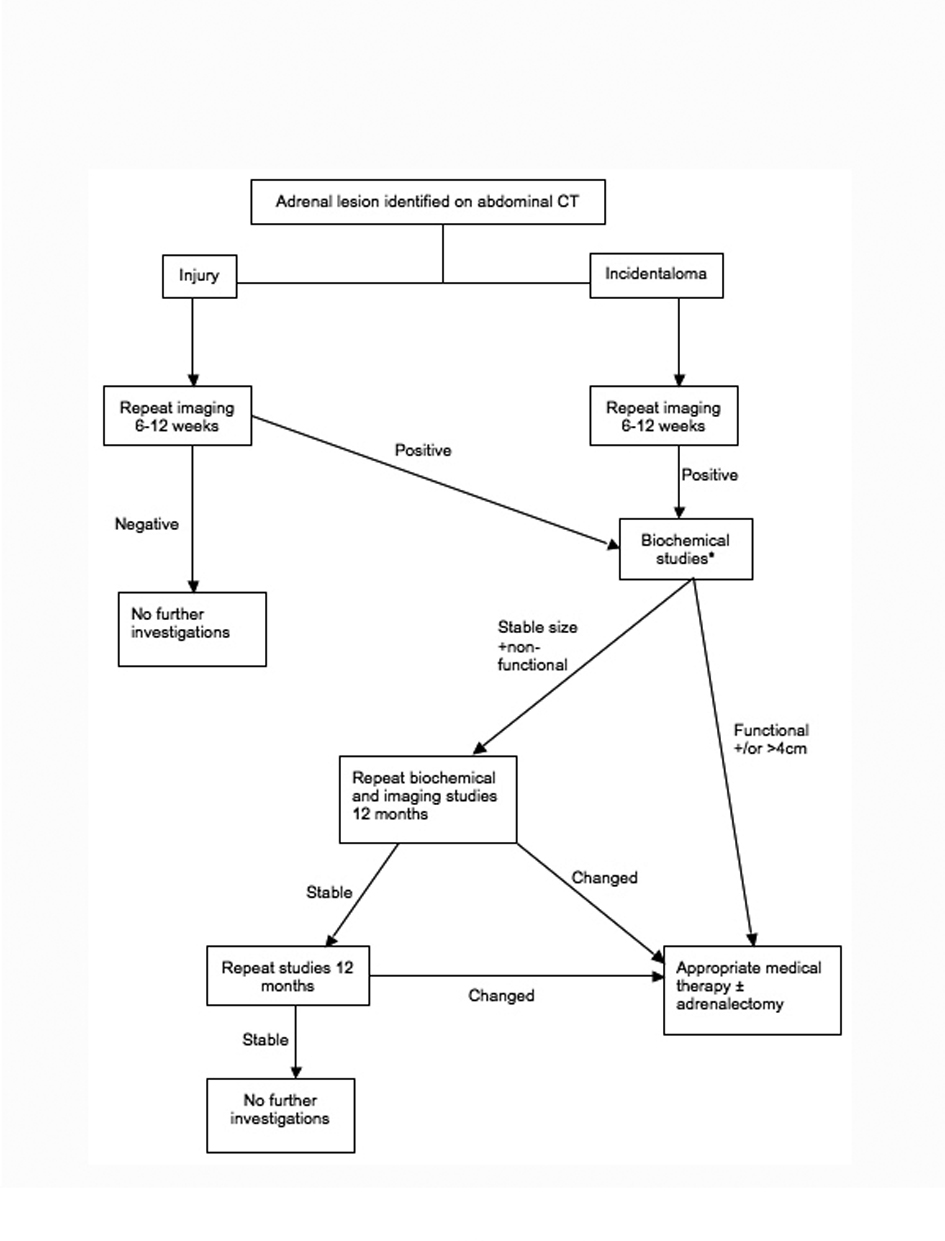
Figure 1. Algorithm for the evaluation and follow-up of incidental adrenal lesions identified during trauma workup. *Biochemical Studies include 24-hour urine catecholamines and cortisol, serum cortisol, plasma free metanephrines, aldosterone, rennin, estrogen, testosterone, dehydroepiandrosterone sulfate (DHEA-S), and potassium.